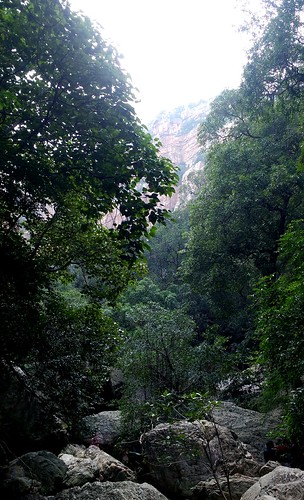Ts of tsetse flies. Just after the rinderpest epidemic abated, wildlife recovered far more quickly than domesticated cattle, and using the wildlife came the tsetse flies. The British colonial administrators, who took over the colony from Germany and remed it Tanganyika, consequently inherited a really serious sleeping sickness issue. Like their counterparts in Uganda, they pursued a tsetsefocused method towards the illness. In, they appointed Charles Swynnerton, a rancher and selftaught entomologist, as director of game preservation. Two years later, they place him in charge of tsetse control. Swynnerton had observed Zulu herders in Mozambique set fires each and every year to rid the countryside of ticks and tsetse flies and he was determined to do the exact same in Tanganyika. In northern Tanganyika, in particular near Lake Victoria, Swynnerton produced Africans burn all vegetation that may possibly harbor the flies and thereby create “fly barriers” about human habitations. As director of your Tsetse Study Department, he had a SPDB biological activity employees of Europeans and Africans. In,, square miles of tsetseinfested land have been evacuated and their inhabitants relocated to places deemed no cost of flies. Travel was strictly controlled and pedestrians and vehicles were searched for flies. Animals that might harbor trypanosomes had been hunted down. The regions that have been thereby depopulated remained so for any extended time thereafter; numerous became the wildlife reserves for which Tanzania is well-known nowadays.The Belgian Medical ApproachIn the Congo Free of charge State, as the intensified Belgian presence triggered increasedmovements of persons and their pathogens, sleeping sickness spread along the rivers. In response for the epidemic, the Belgians adopted a policy that differed radically from that applied by the British in East Africa. As Maryinez Lyons has shown, instead of attempting to separate humans from flies, they set out to destroy the trypanosomes in sick PubMed ID:http://jpet.aspetjournals.org/content/1/2/275 Africans, thereby preventing their transmission to wholesome ones. Following the recommendations on the mission by the Liverpool College of Tropical Medicine in, the colonial government instituted stringent police measures. It imposed a cordon sanitaire around flyinfested places and controlled the movement of persons, requiring medical passports for travelers. It opened camps for  the sick, staffed by Catholic nuns. Africans have been diagnosed by palpating their neck glands. These suspected of getting infected had been herded into these camps, where they have been isolated from outsiders and injected with atoxyl. These camps proved to be unpopular because of the PF-CBP1 (hydrochloride) chemical information painful remedy, poor conditions, lack of meals, and permanent separation of patients from their households. To prevent the sick from escaping, they had to become guarded by soldiers. The epidemic peaked through Planet War I, in part mainly because the authorities forced Africans to collect rubber from Landolphia vines in tsetseinfested regions; those who did not meet their quota were conscripted into labor brigades or as porters, causing the disease to spread even additional. Infection prices in different provinces ranged from of the population, just as doctorsmany of them Italianswere drafted to serve using the armies in Europe. Immediately after various years, the medical authorities shifted to decentralized ambulatory care. The medical corps sent itinerant teams to examine villagers; by the s, they have been examining million people, or in the population, each and every year. Additionally they opened rural clinics, hospitals, and injection centers, in particular inside the western provinces. The campaign.Ts of tsetse flies. Soon after the rinderpest epidemic abated, wildlife recovered more speedily than domesticated cattle, and together with the wildlife came the tsetse flies. The British colonial administrators, who took over the colony from Germany and remed it Tanganyika, hence inherited a really serious sleeping sickness challenge. Like their counterparts in Uganda, they pursued a tsetsefocused approach to the illness. In, they appointed Charles Swynnerton, a rancher and selftaught entomologist, as director of game preservation. Two years later, they put him in charge of tsetse manage. Swynnerton had observed Zulu herders in Mozambique set fires each and every year to rid the countryside of ticks and tsetse flies and he was determined to complete precisely the same in Tanganyika. In northern Tanganyika, in particular near Lake Victoria, Swynnerton produced Africans burn all vegetation that may well harbor the flies and thereby generate “fly barriers” around human habitations. As director with the Tsetse Study Division, he had a staff of Europeans and Africans. In,, square miles of tsetseinfested land had been evacuated and their inhabitants relocated to places deemed no cost of flies. Travel was strictly controlled and pedestrians and autos were searched for flies. Animals that may harbor trypanosomes were hunted down. The areas that were thereby depopulated remained so for any extended time thereafter; lots of became the wildlife reserves for which Tanzania is renowned today.The Belgian Health-related ApproachIn the Congo Free State, as the intensified Belgian presence caused increasedmovements of people and their pathogens, sleeping sickness spread along the rivers. In response towards the epidemic, the Belgians adopted a policy that differed radically from that used by the British in East Africa. As Maryinez Lyons has shown, as an alternative to attempting to separate humans from flies, they set out to destroy the trypanosomes in sick PubMed ID:http://jpet.aspetjournals.org/content/1/2/275 Africans, thereby preventing their transmission to wholesome ones. Following the recommendations in the mission by the Liverpool School of Tropical Medicine in, the colonial government instituted stringent police measures. It imposed
the sick, staffed by Catholic nuns. Africans have been diagnosed by palpating their neck glands. These suspected of getting infected had been herded into these camps, where they have been isolated from outsiders and injected with atoxyl. These camps proved to be unpopular because of the PF-CBP1 (hydrochloride) chemical information painful remedy, poor conditions, lack of meals, and permanent separation of patients from their households. To prevent the sick from escaping, they had to become guarded by soldiers. The epidemic peaked through Planet War I, in part mainly because the authorities forced Africans to collect rubber from Landolphia vines in tsetseinfested regions; those who did not meet their quota were conscripted into labor brigades or as porters, causing the disease to spread even additional. Infection prices in different provinces ranged from of the population, just as doctorsmany of them Italianswere drafted to serve using the armies in Europe. Immediately after various years, the medical authorities shifted to decentralized ambulatory care. The medical corps sent itinerant teams to examine villagers; by the s, they have been examining million people, or in the population, each and every year. Additionally they opened rural clinics, hospitals, and injection centers, in particular inside the western provinces. The campaign.Ts of tsetse flies. Soon after the rinderpest epidemic abated, wildlife recovered more speedily than domesticated cattle, and together with the wildlife came the tsetse flies. The British colonial administrators, who took over the colony from Germany and remed it Tanganyika, hence inherited a really serious sleeping sickness challenge. Like their counterparts in Uganda, they pursued a tsetsefocused approach to the illness. In, they appointed Charles Swynnerton, a rancher and selftaught entomologist, as director of game preservation. Two years later, they put him in charge of tsetse manage. Swynnerton had observed Zulu herders in Mozambique set fires each and every year to rid the countryside of ticks and tsetse flies and he was determined to complete precisely the same in Tanganyika. In northern Tanganyika, in particular near Lake Victoria, Swynnerton produced Africans burn all vegetation that may well harbor the flies and thereby generate “fly barriers” around human habitations. As director with the Tsetse Study Division, he had a staff of Europeans and Africans. In,, square miles of tsetseinfested land had been evacuated and their inhabitants relocated to places deemed no cost of flies. Travel was strictly controlled and pedestrians and autos were searched for flies. Animals that may harbor trypanosomes were hunted down. The areas that were thereby depopulated remained so for any extended time thereafter; lots of became the wildlife reserves for which Tanzania is renowned today.The Belgian Health-related ApproachIn the Congo Free State, as the intensified Belgian presence caused increasedmovements of people and their pathogens, sleeping sickness spread along the rivers. In response towards the epidemic, the Belgians adopted a policy that differed radically from that used by the British in East Africa. As Maryinez Lyons has shown, as an alternative to attempting to separate humans from flies, they set out to destroy the trypanosomes in sick PubMed ID:http://jpet.aspetjournals.org/content/1/2/275 Africans, thereby preventing their transmission to wholesome ones. Following the recommendations in the mission by the Liverpool School of Tropical Medicine in, the colonial government instituted stringent police measures. It imposed  a cordon sanitaire around flyinfested locations and controlled the movement of men and women, requiring medical passports for travelers. It opened camps for the sick, staffed by Catholic nuns. Africans were diagnosed by palpating their neck glands. These suspected of getting infected were herded into these camps, exactly where they have been isolated from outsiders and injected with atoxyl. These camps proved to be unpopular due to the painful treatment, poor situations, lack of meals, and permanent separation of individuals from their families. To prevent the sick from escaping, they had to be guarded by soldiers. The epidemic peaked in the course of Globe War I, in aspect simply because the authorities forced Africans to gather rubber from Landolphia vines in tsetseinfested regions; individuals who didn’t meet their quota were conscripted into labor brigades or as porters, causing the disease to spread even additional. Infection prices in distinctive provinces ranged from of the population, just as doctorsmany of them Italianswere drafted to serve with the armies in Europe. Soon after quite a few years, the medical authorities shifted to decentralized ambulatory care. The healthcare corps sent itinerant teams to examine villagers; by the s, they were examining million people today, or with the population, each year. Additionally they opened rural clinics, hospitals, and injection centers, specifically within the western provinces. The campaign.
a cordon sanitaire around flyinfested locations and controlled the movement of men and women, requiring medical passports for travelers. It opened camps for the sick, staffed by Catholic nuns. Africans were diagnosed by palpating their neck glands. These suspected of getting infected were herded into these camps, exactly where they have been isolated from outsiders and injected with atoxyl. These camps proved to be unpopular due to the painful treatment, poor situations, lack of meals, and permanent separation of individuals from their families. To prevent the sick from escaping, they had to be guarded by soldiers. The epidemic peaked in the course of Globe War I, in aspect simply because the authorities forced Africans to gather rubber from Landolphia vines in tsetseinfested regions; individuals who didn’t meet their quota were conscripted into labor brigades or as porters, causing the disease to spread even additional. Infection prices in distinctive provinces ranged from of the population, just as doctorsmany of them Italianswere drafted to serve with the armies in Europe. Soon after quite a few years, the medical authorities shifted to decentralized ambulatory care. The healthcare corps sent itinerant teams to examine villagers; by the s, they were examining million people today, or with the population, each year. Additionally they opened rural clinics, hospitals, and injection centers, specifically within the western provinces. The campaign.